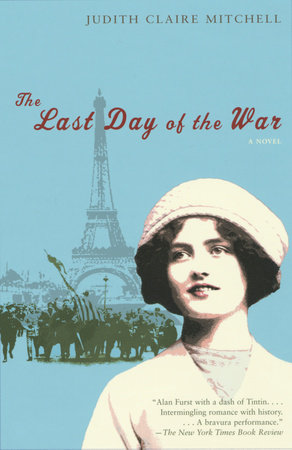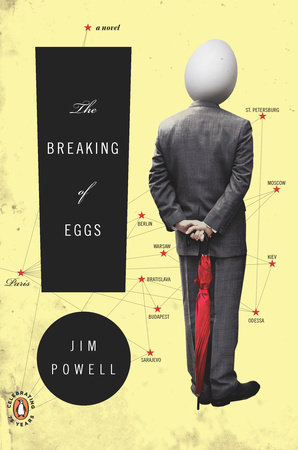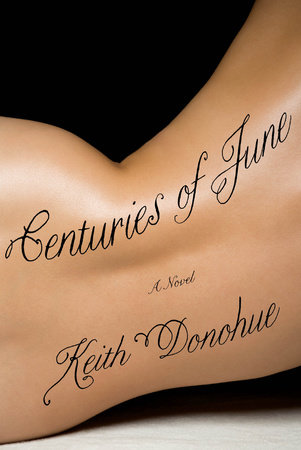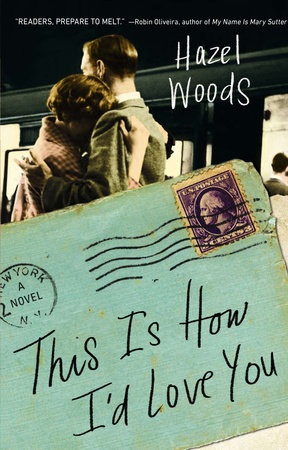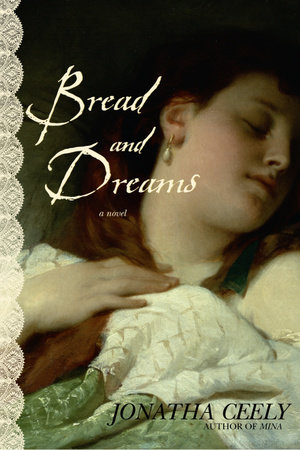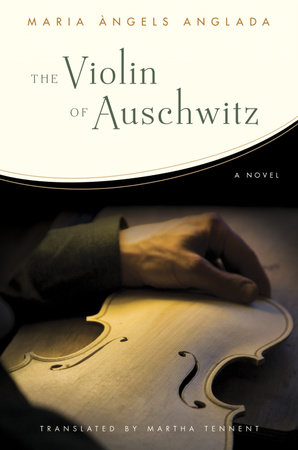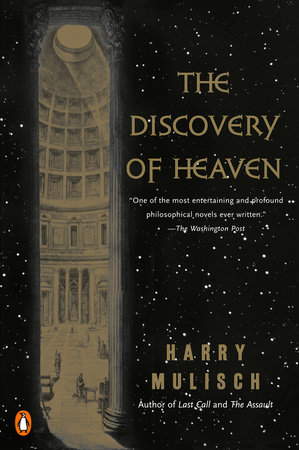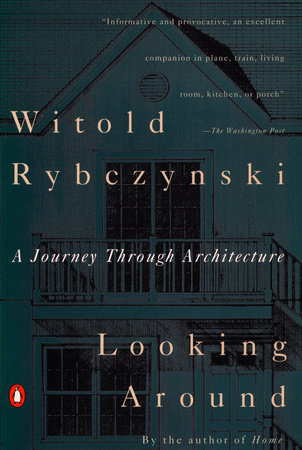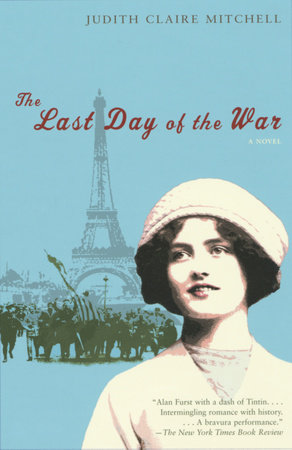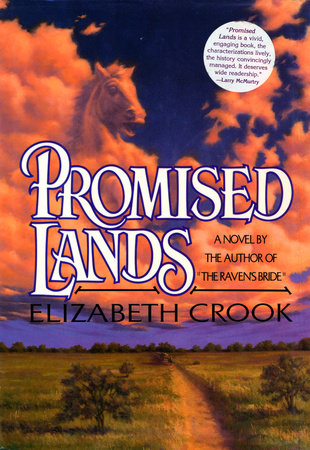Author Q&A
A conversation with Judith Claire Mitchell
Q. How did you come to write a book about a World War One love affair, and particularly about a character of Armenian background like Lieutenant Hagopian?
A. Years before I thought about writing a novel, a friend showed me a sheaf of letters written in 1919 by her great aunt Wera, known as "Wee." Wee had been a volunteer in the canteens the YMCA ran for the doughboys in France, and the tone of her letters was almost relentlessly upbeat and high spirited–giddy tales about flirting and dancing and midnight serenades. They were utterly charming, and yet, every now and then, something chilling would sneak in among all the girlish frivolity–a passage about wounded soldiers, ravaged farmland or obliterated homes. And in one letter there was a single sentence in which Wee reported meeting an Armenian rug merchant who had "lost his entire family in the deportations–very sad." In the next sentence, though, she was back to her flirtations.
I’m no historian and I’d never had any special interest in World War One, but I was intrigued by the dissonance between Wee’s youthful exuberance and the terrible things she was witnessing firsthand. I decided I wanted to write about the American women of World War One, sheltered girls who would return home with their eyes opened, and become flappers, voters, members of the work force, members of the "lost generation,"–in short, modern women. This is how my heroine Yale White (whose story is not remotely Wee’s, by the way) came into my life.
As I began writing, the reference in Wee’s letter to the Armenian deportations haunted me. I’d known vaguely that there had been massacres in Turkey during World War One, but I knew almost nothing about them and didn’t know why Wee had referred to them as "deportations." I began doing some reading and discovered that in 1915-1916, the Ottoman Empire decided to eliminate what it perceived as an internal threat by marching its Armenian population from their homes and across the desert. With virtually no food, water, shelter or protection from murderers, marauders, kidnappers, and rapists, most of the deportees died before reaching the southern city where they were ostensibly to be resettled.
Q. Of course, this is not just an Armenian story, but also a Jewish story; how did Yale’s Jewish identity play a role in your shaping of this book?
A. When my friend gave me her aunt’s letters, I learned that my friend was Jewish, as am I. Neither of us was trying to hide anything, but we were both non-practicing and had never discussed our religions. We both had surnames that gave nothing away. In my case, long before I was born, my father had wanted a job in a notoriously anti-Semitic industry, and so he had changed his Jewish last name to Mitchell, a name randomly picked it out of a phone book. I’ve always been Judy Mitchell, then, but I’ve never felt entirely comfortable with a name that has nothing to do with my background and makes it seem as though I am trying to hide who I am. All this contributed to my creating a character at odds with her Jewish identity, which contrasted nicely with my other protagonist, a man perhaps too embroiled with his Armenian roots.
I suppose that, on a serious literary level I wanted the reader to make a connection between the Armenian and Jewish holocausts, just as my book makes a connection between my Armenian and Jewish characters. But also, it seems to me that if one is going to write about some of the worst things humankind is capable of–genocide, terrorism–then perhaps one ought also to write about the best thing we do. And wouldn’t that be our capacity to fall madly, foolishly, even defiantly in love?
Q. To what extent is this an historical novel?
A. I do think of THE LAST DAY OF THE WAR as a historical novel. It takes place, after all, in the early years of the past century and I have tried to recreate accurately the world in which my characters live. That is, non-historian though I may be, I have struggled to get the language, the dress, the songs, the movies, the street names, the politics, the customs and attitudes and mores right.
On the other hand, I definitely approached the novel from the perspective of a fiction writer. A novelist’s primary allegiance is to the world of the imagination, not the world of facts. This doesn’t give the author of a historical novel the right to be cavalier with the facts. But there will always be some tweaking here and there, a bit of filling in the blanks, if you will.
Q. What characters in the book are real people, and how closely are they modeled on them?
A. Almost all the main characters are made up, but there are a few minor characters who are based on real people. Trevor Hamilton and Stephen Lindsey, the diplomats Dub dines with at the Majestic Hotel, are based on Harold Nicolson and Stephen Bonsal respectively. Bonsal was the American liaison to "the small countries" (Bulgaria, Hungary, Romania, etc.). Nicolson, a better-known figure thanks in part to Portrait of a Marriage, his son’s bestseller about Nicolson’s unusual marriage to Vita Sackville West, was a young idealist when he went to Paris with the British delegation. I read the books and diaries these men wrote about the peace process (focusing mostly on Nicolson’s Peacemaking 1919 and Bonsal’s Unfinished Business) and many of the words and thoughts expressed in those books are expressed, sometimes almost verbatim, by Hamilton and Lindsey in my own book. For instance, the story Lindsey tells about running into Jewish black marketeers in a hotel and Hamilton’s reference to Bela Kun as "an oily little Jew in a moth-eaten coat" are taken from Bonsal and Nicolson. What I hoped to do here was illustrate how even the most educated and compassionate men of those times were often anti-Semitic. I also wished to reveal the frustration the diplomats themselves felt with the peace process–to show how hard it was for men of good will to make a good peace. Still, Hamilton and Lindsey are, above all, fictional characters. Hamilton’s clandestine rendezvous with his old German friend is pure fiction, for example.
General Nazarbekov is another character lifted from the pages of history; in this case I didn’t even change his name. I did, however, make up almost everything I wrote about him except for his reluctance to engage in certain battles during the Caucasian conflict.
Q. How about Erinyes, the secret organization to which Lieutenant Hagopian belongs? Was this a real organization?
Erinyes is very loosely based on a real group of Armenian vengeance-seekers known as Operation Nemesis, which was responsible for the assassination of a number of Young Turks throughout the 1920’s, after it became clear that the world was not going to exact punishment for the massacres.
Q. And the orphans? Was there really an operation that rescued and found homes for Armenian orphans?
Up above, I mentioned the novelist’s penchant for "filling in the blanks." That’s what I was doing when I involved Seta Kazarian with a group that rescued and found adoptive homes for Armenian orphans. I got the idea from oral histories of Armenian survivors. More than a few spoke of being rescued from Kurds who’d held them as slaves; clearly, then, there had been some sort of rescue effort and just as clearly these children had found their way to America. I took those minimal facts and filled in the blanks, invented the details.
This is the joy of writing fiction–you get to make things up. On the other hand, your fictional inventions must always be true–not literally true, necessarily, but always essentially true.
Q. Yale White, your heroine, is a Midwestern Jew who has changed her name from Yael Weiss, and Dub Hagopian, while born of Armenian parents who fled the troubles in their homeland, grew up in Rhode Island and considers himself American. How does your book address the conflicts of these young first generation Americans? What is appealing about them as characters for a novelist’s consideration?
A. I think this book is, in many ways, about the need to feel that we belong to something larger than ourselves, whether that something is as small as our family or as large as our nation. It’s also about how we react when we’re told, either subtly or explicitly, that we don’t really belong after all. The Armenian and Jewish people both know what it is like to be told they don’t belong to societies they’ve helped build. They also know what it feels like to be violently expelled from those societies.
In this book, Dub and Yale are trying to figure out where and the extent to which they fit in. Is he an Armenian, she a Jew? Or are they both the very same thing, that is, American? Or are they something in between–"hyphenates" to use the pejorative term Teddy Roosevelt used to brand immigrants? Or are they all of these things at once? And if Yale doesn’t identify herself as Jewish, does she stop being a Jew, as she argues toward my book’s end? Or does the fact that society regards her as Jewish make her forever Jewish, as Dub counters? There are, of course, no simple or definitive answers to any of these questions, but the questions themselves interest me, and fiction is the perfect vehicle to ask such questions.
Q. What is the significance of your title, THE LAST DAY OF THE WAR? Yale and Dub’s adventures are only beginning as the war ends….
A. I’m fascinated by the fact that although we are taught that the last day of World War One was November 11, 1918–and, of course, that was the last day–the issues and conditions that caused the war continued unresolved far beyond that date.
Of course, we all know–and many historians have said–that the harsh terms of the Treaty of Versailles made World War Two all but inevitable. So in that sense, for Germany, the actual last day of the war might really have been May 8, 1945.
Or was it the day in 1989 that the Berlin Wall came down?
For some Armenians, World War One continues to this day. With Turkey still denying that a deliberate genocide took place within its borders, many Armenians cannot find closure, and these Armenians fight on. Some fight for the return of their land and for reparations, others for nothing more than the concession that, yes, a terrible and intentional violence was inflicted upon their people. Some fight through politics or activism or art; others still turn to assassination and terrorism. For many Armenians, of course, the war has ended and they live peaceful lives in their new homelands, assimilated Frenchmen, average Americans.
With respect to my novel, the last day of the war for Dub Hagopian and Yale White is the day Dub decides he has done all he is willing to do to avenge the massacres and makes his own imperfect and uneasy peace with the world. Or at least that’s what Dub and Yale think as the book ends. The reader, I hope, knows better. The reader knows that regardless of how vehemently Yale denies her Jewishness, she is going to wake up someday soon in Hitler’s Europe. Yale has not really seen the last day of her war.
Q. Lying and deception play an important role in a novel of political intrigue, in which the heroine “passes” for something she is not. How did you feel, as you were bringing her to life, about her passing? Do you admire her as a character nonetheless?
A. This is an interesting and difficult question, because, when I write, I actually try very hard to ignore my own values so I can express my characters’ values without judgment. Yale White, for instance, doesn’t have a single qualm about passing, and I really never thought about whether I approved of what Yale was doing. I was too preoccupied with getting her point of view across.
This is not to say that the reader should withhold judgment, too. The reader should judge away. Too often, I think, we confuse the writer’s subject matter with the writer’s personal beliefs. In THE LAST DAY OF THE WAR, I am writing about people who seek violent revenge not because I’m advocating vengeance (I’m not!) or even because I think vengeance is wrong and I want to get that message out. I’m writing about vengeance because I’m interested in figuring out why some people who feel oppressed or wronged choose violent retaliation while others don’t. I’m really just asking a question.
And yes, when all is said and done, and I go back, and approach the book as a reader and not as a writer, then I do admire flawed, mistake-prone Yale. I admire her because she is struggling to figure out who she is and who she is going to be and that is always a noble struggle. I admire her for literally and figuratively trying on various outfits and guises, seeing which ones fit and which ones don’t. I admire her for refusing to be defined and limited by others. Yale is a an imperfect person living in an imperfect world, and she makes lots of mistakes, but it’s all in service of doing the best she can to become the person she wants to be, which is not necessarily the person the world would have her be. I find that quest admirable.
And she is, after all, only eighteen. She’ll do better as she grows up.
Q. How did you come to write a first novel in your forties? What were you doing before?
A. For almost twenty years before I decided to get serious about my writing, I worked as a paralegal for a Rhode Island law firm. I’d been a writing major way back when in college, but had given up fiction when it came time to start earning a living. Paralegaling paid the bills.
Toward the end of those twenty years slaving away for lawyers, though, a friend near my age died quite suddenly, and along with my sorrow, I felt as though I’d received a wake-up call and the voice on the line was quoting the poet Mary Oliver: "What are you going to do with your one wild and precious life?"
My husband is an artist, and I’d seen firsthand how blessed a life it is, to work at something you find fulfilling and meaningful. I returned to fiction, reading copiously, taking mini-courses and attending summer workshops. My instructors kept urging me to apply to graduate schools and when I was 44, I finally got the courage to do so. Much to my shock, I was accepted by the Iowa Writers’ Workshop. Next thing I knew, I’d quit my job (giving up the nice salary, the five weeks of vacation, and the dental plan) and moved with my supportive husband and yowling cat to Iowa City. Two years later, I had my MFA, which most people think means Master of Fine Arts, but which, in my house, stands for the Mid-Forties Adventure.
After all that, it seemed the right thing to do would be to write a book.
Q. Who are some of the writers whose work has inspired the kind of book you chose to write with THE LAST DAY OF THE WAR?
A. When I realized (again much to my shock) that the book I was writing appeared to be a historical novel, I began reading every historical novel I could get my hands on. As a writer, you learn so much from books themselves. My favorite teacher among the novels I read while working on my book was Peter Carey’s Oscar and Lucinda. I learned so much about structure, pacing and point of view from that book. I love that book.
Other excellent literary teachers of mine included Pat Barker’s meticulously researched and beautifully written World War One trilogy, Regeneration, The Eye in the Door, and The Ghost Road. E.L. Doctorow’s Ragtime has long been one of my favorite novels and I reread it several times during the writing process. Hans Konig’s Death of a Schoolboy helped me understand how someone might justify political murder. Louis de Bernieres’s Corelli’s Mandolin contained lessons about blending humor and drama. Another book I both adored and learned from was Sheri Holman’s The Dress Lodger, a novel set in the slums of 1830’s London and a book so transporting that right now, as I think of it, I feel enveloped in darkness and damp despite my bright, warm room.
